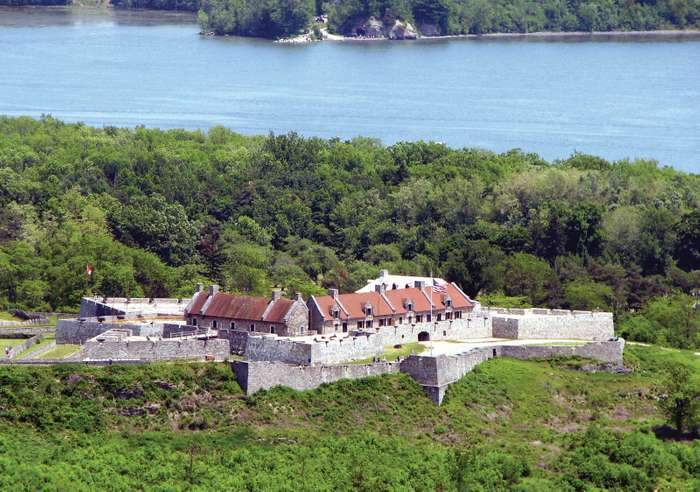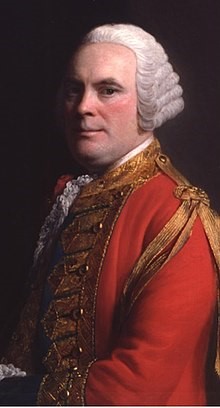
James Abercromby (1706 – 23 April 1781) started his military career at the age of 11 by entering the 25th Foot as an ensign. It is a truth universally acknowledged, that significant promotion in the military, must await a war. In 1734, not yet a captain, he sought and won promotion as Banff member of parliament courtesy of his brother-in-law, William Duff – Duff’s son was underage. Abercromby had to give up his seat in 1754 when the son came of age.
Abercromby’s big military moment, and it was just a moment, came in December 1757 with the outbreak of the Seven Years’ War. He was made Commander-in-Chief of British forces in America and directed to take what is now called Fort Ticonderoga from the French. He managed to assemble a force of 15000 and move them and their supplies through the wilderness. That said, the troops eventually lost their way in the dense forest and soon after, Lord Howe, Abercromby’s right hand man, was killed during a brief skirmish with the French.
At Fort Ticonderoga the French commander, Montcalm, was hastily entrenching his force of some 3,500 men behind a barricade of brush and abatis (sharpened wooden stakes stuck in the ground, pointing at advancing troops). Fearing French reinforcements and lacking Lord Howe’s advice, Abercromby vacillated, but eventually ordered a series of frontal assaults without waiting for artillery support. Bad move; the strategy was a disaster leaving 1,944 British troops dead or wounded and Montcalm in situ. Abercromby then ordered a retreat. Second bad move; his forces still vastly outnumbered Montcalm’s, and by bringing up his artillery, he could have won the day. However, Abercromby was disheartened by his heavy losses and pulled back to his fortified camp south of Lake George.
Worse was to come. James was mocked as Mrs Nanny Cromby, a name that referenced his organizational skills and his indecisive leadership. In September 1758 he was sent home and replaced by General Jeffery Amherst.



